Hyperbolic Trigonometric Functions
Just as trigonometry can be performed on the unit circle ,
it can also be performed on the unit hyperbola :
x2 − y2 = 1.
Define the hyperbolic cosine function by

and the hyperbolic sine function by

A simple computation then shows that
cosh2(x) − sinh2(x) = 1,
which is the hyperbolic trigonometric identity analogous to the Pythagorean
identity
cos2(x) + sin2(x) = 1
from ordinary (circular) trigonometry.
Next, as in the case of ordinary trigonometry , we define the remaining four
hyperbolic trigonometric functions
from these first two :
Define the hyperbolic tangent function by

and the hyperbolic cotangent function by

Define the hyperbolic secant function by

and the hyperbolic cosecant function by

Hyperbolic Pythagorean Identities
In addition to the identity derived earlier,
cosh2(x) − sinh2(x) = 1,
there are two other hyperbolic identities obtained by dividing this one by
sinh2(x) and cosh2(x), respectively:
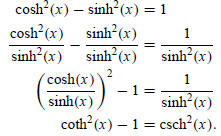
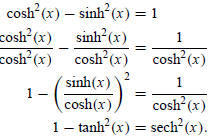
We summarize these here:

Derivatives of Hyperbolic Functions
By using the definition of the hyperbolic sine function, we have

Similarly,

The derivatives of the remaining hyperbolic trigonometric
functions are obtained from their definitions using the
Pythagorean hyperbolic trigonometric identities , the definitions of the
hyperbolic functions, and the quotient rule :
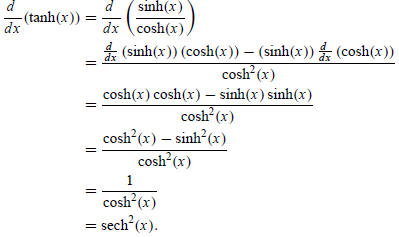
Similarly,
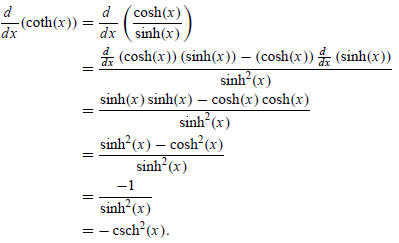
The remaining two hyperbolic trigonometric functions are handled similarly:
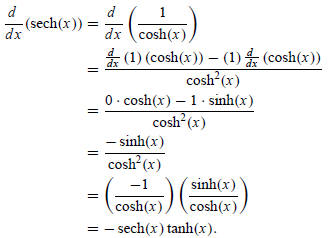
and
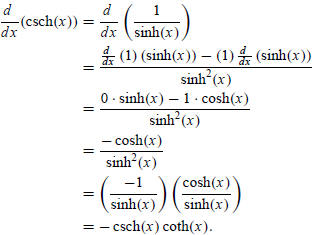
Inverse Hyperbolic Trigonometric Functions
The four functions

are one-to-one on their domains, while the functions

are one-to-one on the interval x ≥ 0. So, we can define six inverse hyperbolic
trigonometric functions .
Since the hyperbolic functions are defined in terms of the exponential function,
it is only natural to expect that
the inverse hyperbolic functions can be defined in terms of the natual logarithm
function . We derive these six formulas
next:
| Prev | Next |